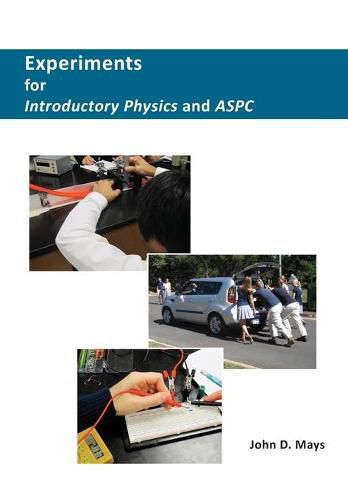Readings Newsletter
Become a Readings Member to make your shopping experience even easier.
Sign in or sign up for free!
You’re not far away from qualifying for FREE standard shipping within Australia
You’ve qualified for FREE standard shipping within Australia
The cart is loading…






Six experiments to accompany Introductory Physics and ASPC
The Pendulum Lab The Soul of Motion Lab The Hot Wheels Lab DC Circuits The Solubility Lab The Density Lab
Experiments are designed to teach students how to function in a laboratory, how to take measurements, how to calculate and account for error, how to use new equipment, and how to create a proper lab report on a computer from scratch.
From the intro:
The activities in this book are the results of those years trying things out and improving my home-made apparatus to increase the reliability and accuracy of the results. These experiments and teacher demonstrations are the ones I presently do in my own classes, the little carts and friction boxes now gathering dust in a closet.
Most of these experiments can be performed very inexpensively. In my descriptions I indicate how to do the experiment with little investment, making the experiments accessible to schools and homes with limited funds. Over the years I have enhanced some of these experiments with digital electronics for data collection. This makes the experiment more interesting to the students, who are surrounded with digital electronics and tend to find anything else uninteresting. The electronics also increase accuracy significantly, improving results and making the analysis more satisfying. But my experience has shown that the simple act of doing an experiment outside with a pickup truck is so exciting for the students that they will love it whether you collect force data with fancy digital equipment or with lowly bathroom scales purchased from a discount store, as I did for many years. If budgetary constraints are an issue for you, start doing the experiments without the fancy digital equipment. You can modify the experiment and add the electronics over time as funds become available.
I know there are a lot of books out there with ideas for science experiments. But the emphasis in this book is on experiments that are captivating, are low cost (at least initially), provide solid opportunities to do physics (and a little chemistry), and use equipment that is either already familiar or worth knowing about. I hope some of these experiments will enhance your own classes.
$9.00 standard shipping within Australia
FREE standard shipping within Australia for orders over $100.00
Express & International shipping calculated at checkout
Six experiments to accompany Introductory Physics and ASPC
The Pendulum Lab The Soul of Motion Lab The Hot Wheels Lab DC Circuits The Solubility Lab The Density Lab
Experiments are designed to teach students how to function in a laboratory, how to take measurements, how to calculate and account for error, how to use new equipment, and how to create a proper lab report on a computer from scratch.
From the intro:
The activities in this book are the results of those years trying things out and improving my home-made apparatus to increase the reliability and accuracy of the results. These experiments and teacher demonstrations are the ones I presently do in my own classes, the little carts and friction boxes now gathering dust in a closet.
Most of these experiments can be performed very inexpensively. In my descriptions I indicate how to do the experiment with little investment, making the experiments accessible to schools and homes with limited funds. Over the years I have enhanced some of these experiments with digital electronics for data collection. This makes the experiment more interesting to the students, who are surrounded with digital electronics and tend to find anything else uninteresting. The electronics also increase accuracy significantly, improving results and making the analysis more satisfying. But my experience has shown that the simple act of doing an experiment outside with a pickup truck is so exciting for the students that they will love it whether you collect force data with fancy digital equipment or with lowly bathroom scales purchased from a discount store, as I did for many years. If budgetary constraints are an issue for you, start doing the experiments without the fancy digital equipment. You can modify the experiment and add the electronics over time as funds become available.
I know there are a lot of books out there with ideas for science experiments. But the emphasis in this book is on experiments that are captivating, are low cost (at least initially), provide solid opportunities to do physics (and a little chemistry), and use equipment that is either already familiar or worth knowing about. I hope some of these experiments will enhance your own classes.